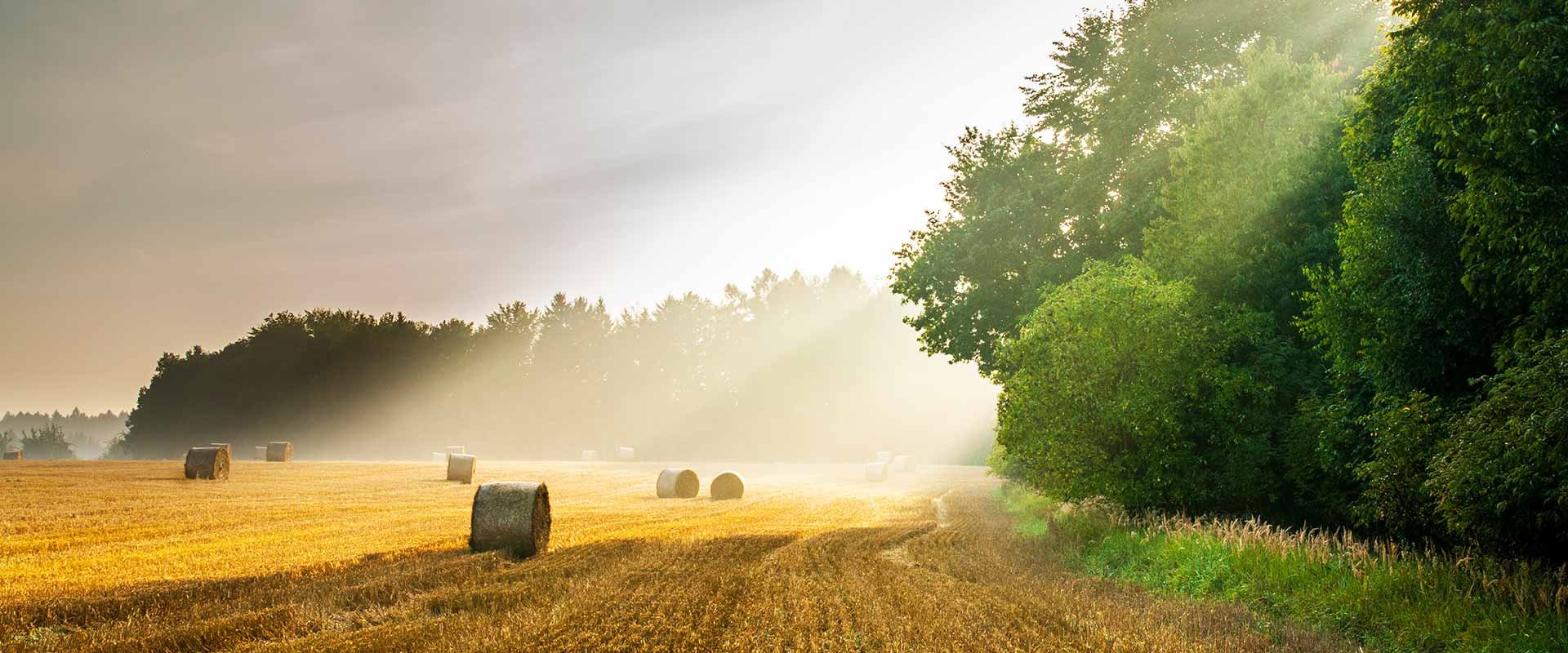Forests and agriculture: a symbiotic relationship?
life sciences

life sciences
International Day of Forests (Monday 21 March) raises awareness of the importance of forests and our duty to protect them. In line with the 2022 theme ‘Forests and sustainable production and consumption,’ we look at how forests and agriculture can – and must – exist in harmony to ensure the future health of our people and planet.
The preservation of forests and the production of food via agriculture are often thought to be separate and conflicting entities. On one side lies environmental concerns for our planet and on the other, protection of livelihoods and food security for the world’s burgeoning population. However, the fate of forests and food production is inextricably linked, and our ability to effectively balance both is one of the most critical challenges of our time.
It’s no secret that forests play a key role in supporting a healthy environment: filtering the air and water, preventing erosion, providing habitat for wildlife and acting as a carbon sink to negate the impacts of global warming. However, forests also provide vital support for agricultural food production itself.
Pest control: healthy forest ecosystems promote a range of birdlife, insects, spiders, fungi, and bacteria, which all consume or control pests, reducing the need to use commercial pesticides on crops planted nearby. In fact, approximately 99 per cent of crop pests can be naturally controlled by predators and plants found in forests.
Pollination: more than 35 per cent of the world’s agricultural crops rely on pollinators for production. This pollination is dependent on biodiversity – such as bees, butterflies, birds, and bats – and the presence of fauna. Coffee production is one example of a crop that is negatively affected when planted further away from forests, due to reduced pollination.
Soil protection: Native vegetation helps maintain soil fertility, as trees can provide nutrients from leaf litter and reduce erosion of nutrient-laden topsoil. Healthy soil equals healthy crops. Nitrogen-fixing trees can also help to enhance soil fertility by cycling atmospheric nitrogen, thus increasing crop yields.
Water conservation: as the highest water-consuming sector worldwide, agriculture is a thirsty business. Forested catchments are estimated to supply 75 per cent of usable water globally. Not only do forests help maintain rainfall, they also help preserve the quality of water by reducing erosion (which leads to poor water quality).
Crop shelter: crops planted close to forests have the benefit of natural protection from the elements. Forest cover can act as shade, wind breaks, and protection from floods or other extreme weather events.
Livestock protection: farmed animals kept close to forests enjoy shelter from extreme temperatures and the supplementary source of fodder and forage, such as twigs, leaves, fruit and seeds. In severe climates, this reduces the risk of heat stroke and adds beneficial variety to their diets.

Despite forests providing important benefits for agriculture, our current and mainstream practices of agriculture are incredibly destructive towards forests. Agriculture is the leading cause of deforestation across the globe, as land is cleared to make way for food crops, pasture and tree crop plantations. Our current methods of agricultural food production aren’t sustainable in the long term and in fact threaten our long-term food security. How can we achieve sustainable agriculture: producing enough food to feed the world while protecting (and reaping the benefits of) forests? The answer lies in agroforestry.
Agroforestry is the practice of incorporating trees into agriculture has been around for thousands of years. Agroforestry systems are diverse, ranging from trees kept on farms after clearing forests, to alley cropping – creating alleys by planting shrubs or trees within crops, to intercropping – growing two or more crops in close proximity, to planting a complex array of fauna that mimics a natural forest ecosystem.
Despite its many benefits, agroforestry has suffered a gradual decline over the centuries. The development of crop rotation in the Middle Ages, along with the arrival of chemical fertilisers in the 19th century, has drastically reduced farmers’ reliance on nearby forests to provide nutrients and protection for their crops. The introduction of machinery into agricultural farming has further reduced the practice of agroforestry – as machines grow ever larger, it has become less efficient to have to manoeuvre around trees.
However, reviving the widespread practice of agroforestry would provide significant benefits – improving agricultural productivity, boosting food security, enabling regeneration of the landscape, and mitigating the environmental impacts of widespread deforestation.

Managing landscapes to achieve balance between forest conservation and agricultural outcomes is a complex global challenge that we must tackle both strategically and holistically, with a long-range view. It’s not enough to focus on one issue without acknowledging the other, because they are interconnected, and our survival depends on the efficient management of both.
Agriculture currently occupies one third of the ice-free surface of the planet and yet 811 million people experience hunger worldwide. The answer does not lie in clearing more land to produce more food, contributing further to a decline in biodiversity, which in turn negatively impacts agricultural outcomes.
We already produce adequate food to feed the world. Instead, we need to develop sustainable agricultural practices and become more efficient at distributing and using the food we grow. Allowing forests to support agriculture and developing agricultural practices to support forests will ensure the ongoing preservation of both.
Brunel’s entrepreneurial spirit and background as a technical role specialist make it a natural partner for life science ventures. Speak with our experienced team today!